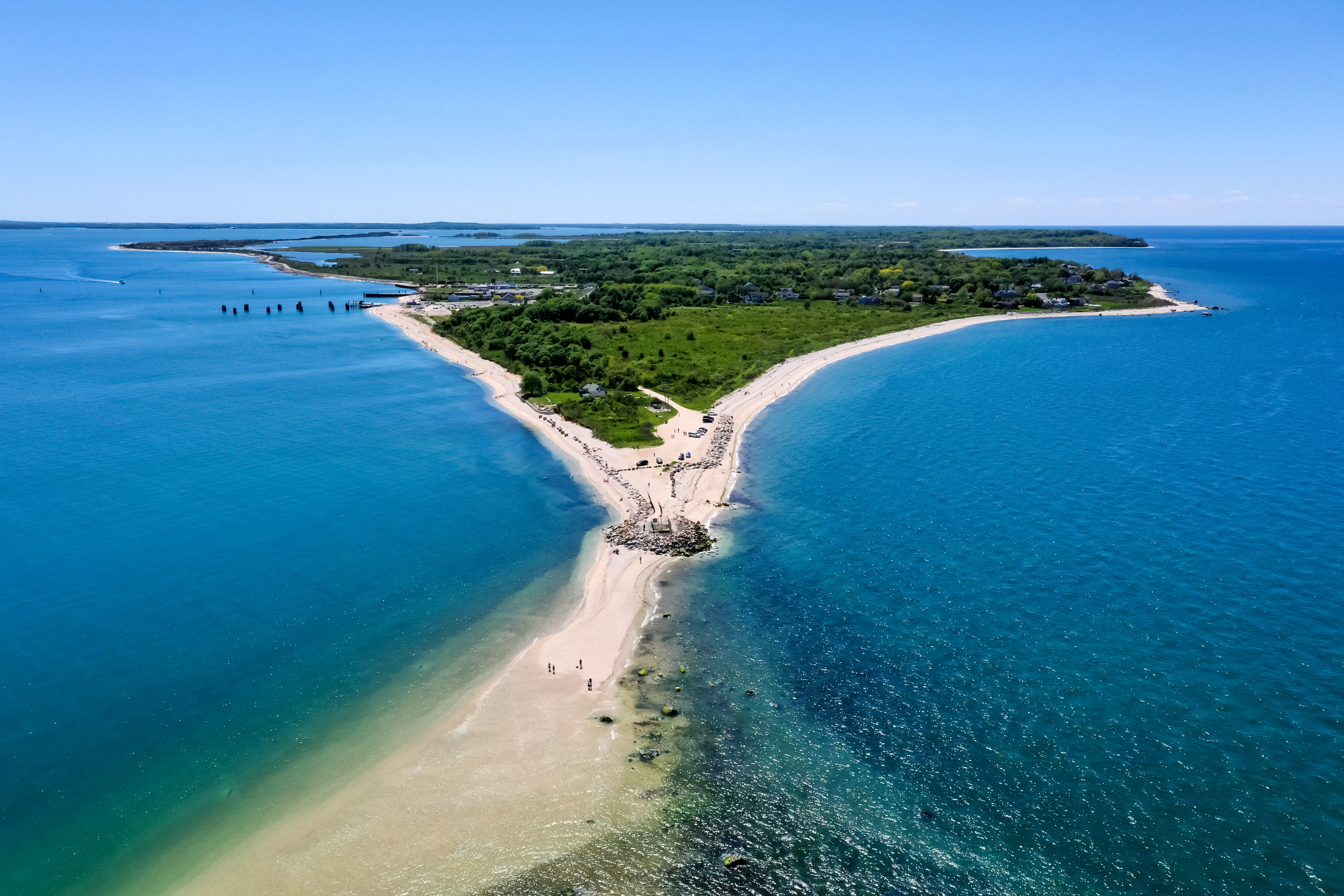Get Oriented with Orient Point

It has been a long winter. Too much cold, too much gray, too much time indoors. One easy way to welcome spring: Head east — as far east as you can go on the North Fork — to Orient.
Unless you are taking or meeting the New London ferry, you aren’t likely to venture past Greenport. But crossing the mile-long causeway from mainland Long Island into Orient is the perfect way to refresh. The stunning vistas and proximity to nature will help you to see the North Fork’s most natural beauty and will help you to get re-oriented.
Orient literally means “east,” from the Latin “to rise” (where the sun rises). It also means to face east, to set right, or to proceed.
This easternmost tip of the North Fork was originally called Poquatuck by its Algonkian inhabitants. When English settlers arrived in 1640, they called it Oysterponds for the abundance of local oysters.
The area drew fishermen and farmers, and homes were built here as early as 1661. Oysterponds was renamed Orient in 1836.
Slowing Down in Orient: Orient Beach State Park
The geography and open beauty of Orient invite a slower pace. Those rushing to the ferry can miss the best part: driving slowly, windows open, smelling the salty air and passing hardly another car. But perhaps the greatest gem of Orient is Orient Beach State Park, the park that almost wasn’t.
Even residents of the North Fork tend to forget about the stunning park on its eastern tip. For beach walking, shady trails, solitude and bird watching, there is no better spot on the East End.
The state park is a 363-acre natural peninsula that curves along the shoreline. It is surrounded by Gardiner’s Bay on one side and Long Beach Bay on the other, with several ponds in between. The narrow road, before the land widens, provides stunning vistas of both bays. As you bike or drive along the road, the ferry dock fades away and you are likely to see osprey soaring overhead.
Originally called Long Beach, this strip of land protects Orient Village from the waters of Gardiner’s Bay. Because this land was unsuitable for farming, all local landowners held it in “commonage” in the 1700s. The bays surrounding it were rich sources of fish, scallops and oysters. Fishermen leased land and put up shacks along the shore. A fish factory was located at the tip of the peninsula on leased land until it was destroyed by fire in 1880. The land of Long Beach was used to harvest salt hay for animals and building insulation. The common landowners eventually decided to turn the land over to the state, and it became a state park.
Orient Beach State Park has pristine beaches, salt marshes and a rare maritime red cedar forest. Due to its natural beauty, the park was named a National Natural Landmark in 1980, one of only 599 in the country. The short Roy Latham trail loops past red cedar, black-jack oak trees and prickly pear cactus, which bloom in late May. Unmarked trails meander 2.4 miles through the maritime red cedar forest, with water and pristine views on both sides. In the spring, winter and fall, it is rare to pass another person.
There is a 2.2-mile bike path in the park. Kayaks can be rented and a kayak map includes suggested routes and various natural and historical points of interest, including piping plover nesting areas and the fish factory ruins.
In addition to trails, beaches and a picnic area, the park hosts an Easter egg hunt and Christmas tree lighting.
Osprey and Piping Plovers
The park is a great spot for birding. The habitats of barrier beaches, salt marshes, shallow bays and maritime forests draw a wide range of birds, fish and several regionally rare plants. OBSP has 45,000 feet of frontage on Gardiner’s Bay. The salt marshes are an important habitat for fish, birds and crabs, including the diamondback terrapin.
It is listed as an Audubon Important Bird Area. Federally protected piping plovers and least terns nest here (please respect nesting areas from mid-April to August), and there are 12 osprey nests in the park. Snowy owls are occasional winter visitors. OBSP has a birding checklist on its website to help visitors spot birds in the area.
Lighthouses
Orient Beach is now a United States Lighthouse Society Passport Stamp location. Four lighthouses are visible from the park: Bug Light, the Plum Island lighthouse, Orient Point lighthouse (“Coffee Pot”) and the Cedar Island lighthouse.
Bug Light — so called because its original pilings resembled spider legs — was destroyed by fire and rebuilt in 1963.
So, if the walls are closing in, head east. Get oriented. Spring is rising!



